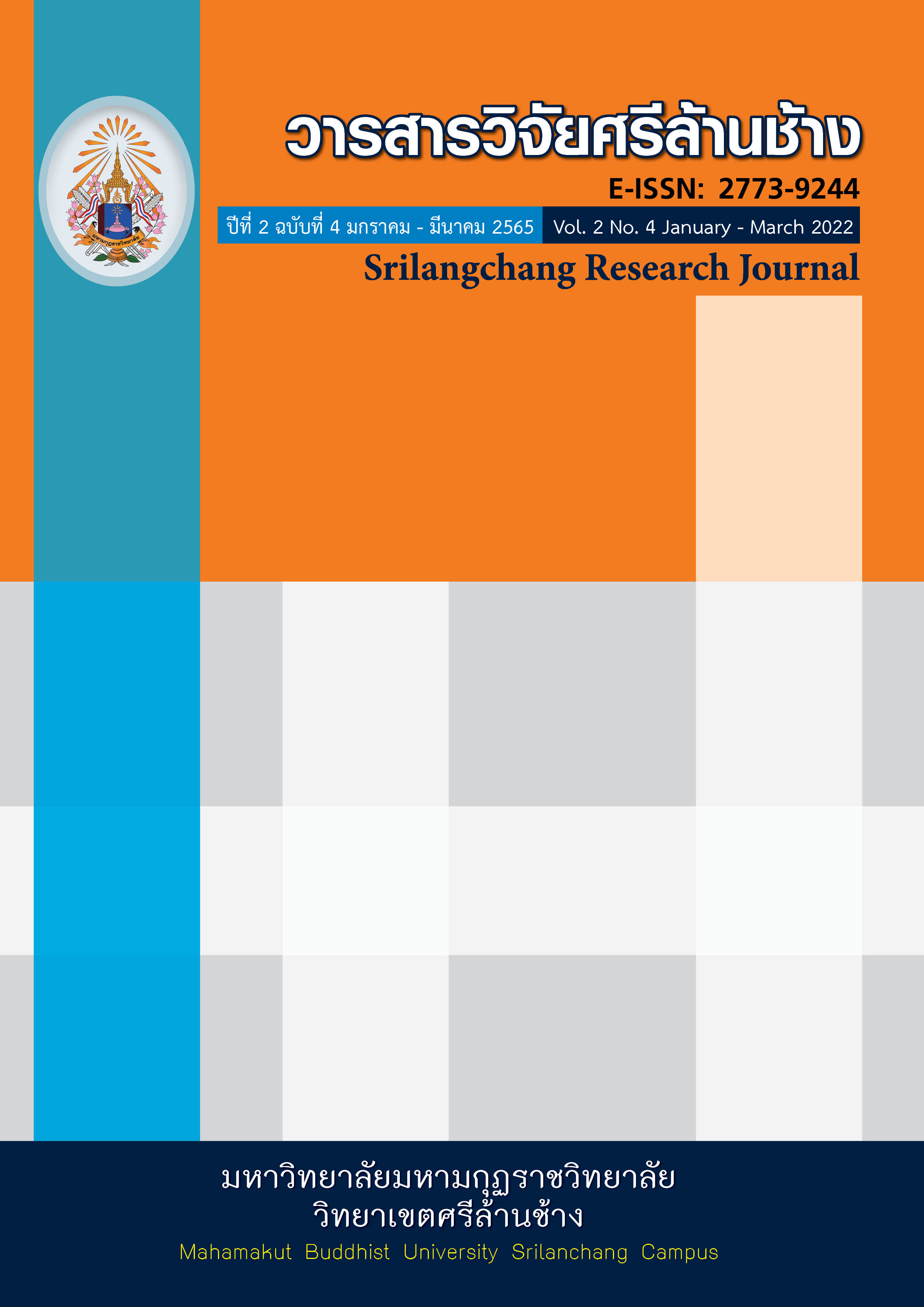SERVANT LEADRSHIP OF LOCAL ADMINISTRATIVE ORGANIZATION IN ROI – ET PROVINCE
Keywords:
Leadership, Servant Leadership, Local Administrative OrganizationAbstract
The objectives of the research were (1) to study the servant leadership of administrators of local administrative organizations (LAOs) in Rot Et province, and (2) to compare the servant leadership of LAO administrators in RotEt province, classified by organization and status. The population of the research was a total of 4,060 administrators and employees under LAOs in Rot Et province; the 354 research samples were selected through Krejcie and Morgan sampling table, based on the stratified sampling and simple random sampling approaches. The instrument used for data collection was the questionnaire. The statistics used for data analysis consisted of frequency, percentage, arithmetic mean, standard deviation, t-test and one-way analysis of variance (ANOVA).
Research result found that:
- The basic information of personnel under local administrative organizations in Roi Et Province was found that there were 191 LAO administrators (accounting for 54%), and 222 operational employees (accounting for 62.7%).
- The servant leadership of LAO administrators in Rot Et province was found to be overall at the highest level (x̄ = 4.59, S.D. = 0.43). Separately considered in the descending order, each aspect was found to be at a high level: Service (x̄ = 4.61, SD = 0.45), Vision (x̄ = 4.61, SD = 0.47), Humility (x̄ = 4.58, SD = 0.48) and Empowerment. (x̄ = 4.54, SD = 0.48), respectively.
- The comparison of the servant leadership of LAO administrators in Roi Et province, classified by organization, was found to be overall and separately different at a statistically significant level of .05, except only for Vision, which was not found different.
- The comparison of the servant leadership of LAO administrators in Rot Et province, classified by status, was found to be overall indifferent. Separately considered, Humility was only found to be different at a statistically significant level of .05.
References
จรัส สุวรรณมาลา. (2550). วัฒนธรรมการเมืองท้องถิ่นในประเทศไทย. วารสารสถาบันพระปกเกล้า. 5(3). เดือนกันยายน - ธันวาคม 2550. หน้า 11-18.
ณัฐพล ใจจริง. (2560, 15 ธันวาคม). นักการเมืองท้องถิ่น. ออนไลน์. สืบค้นเมื่อวันที่ 1 กุมภาพันธ์ 2565 แหล่งข้อมูล http://www.phothong101.go.th/index.php/d/q/40-q9
พิชญ์ณิฐา พรรณศิลป์ สัญญา เคณาภูมิ และเสาวลักษณ์ โกศลกิตติอัมพร. (2558). บทบาทของผู้บริหารท้องถิ่นในศตวรรษที่ 21. วารสารสันติศึกษาปริทรรศน์ มจร. 3(2). หน้า 146 – 161.
วนิดา วาดีเจริญ รังสรรค์ เลิศในสัตย์ และสมบัติ ทีฆทรัพย์. (2560). ระเบียบวิธีวิจัยจากแนวคิดทฤษฎีสู่ภาค ปฏิบัติ. กรุงเทพฯ: บริษัท ซีเอ็ดยูเคชั่น จำกัด (มหาชน).
สุภัททา ปิณฑะแพทย์. (2554). ภาวะผู้นำของนักบริหารการศึกษามืออาชีพ. ออนไลน์. สืบค้นเมื่อวันที่ 1 กุมภาพันธ์ 2565 แหล่งข้อมูล http://www.supatta.haysamy.com/leader_pro.html.
สำนักงานท้องถิ่นจังหวัดร้อยเอ็ด. (2563). จำนวนข้าราชการองค์กรปกครองส่วนท้องถิ่นจังหวัดร้อยเอ็ด. ออนไลน์. สืบค้นเมื่อวันที่ 1 กุมภาพันธ์ 2565 แหล่งข้อมูล https://roietlocal.go.th/public/localpersonnel/data/detail/localpersonnel_id/1/menu/320/page/1
Avolio, B. (1999). Full leadership development: Building the vital forces in organizations. Thousand Oaks, CA: Sage.
Laub, J. (1999). Assessing the servant organization: Development of the organizational Leadership(SOLA) Instrument. Dissertation Abstracts International. 60(2), 308.
Downloads
Published
How to Cite
Issue
Section
License

This work is licensed under a Creative Commons Attribution-NonCommercial-NoDerivatives 4.0 International License.


